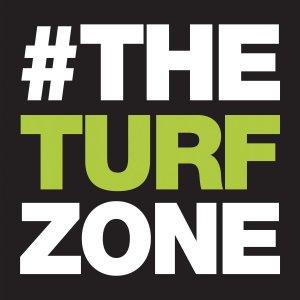The Turf Zone Podcast

Virginia Turfgrass Council – Crisis Turfgrass Management
Virginia Turfgrass Journal – Michael Goatley, Jr., Ph.D., Professor & Extension Turfgrass Specialist, School of Plant & Environmental Sciences, Virginia Tech
Nothing reminds us of how fragile our lives, jobs, and relationships are until they are seriously disrupted by an unforeseen event. If you’re anywhere near my age (58) then 9/11 and 4/16 have particular significance in our lives, and Covid-19 will be another event that will be remembered for how it changed the way we do things, even in managing turfgrasses. The 2020 Pandemic has certainly impacted the turfgrass industry and its effects will continue even as/after social distancing restrictions are relaxed and public activities on our sports fields and golf courses expand and/or return. For situations where budgets and labor forces were not severely impacted by the pandemic, turfgrass managers have taken advantage of the downtime in what are typical high turfgrass use periods to complete a variety of activities/projects that otherwise would not have been possible. I have noted irrigation and drainage installations, bunker renovations, a wide variety of tree management activities, earlier than ever spring transition of ryegrass overseeding back to bermudagrass, rebuilding/renovating infield skins, pitching mounds, and batter’s boxes, etc. The only ‘slaps on the hand’ for the turfgrass managers that I have heard in these situations has been admonishments in some cases for not paying enough attention to ‘social distancing.’ However, the real world scenario for many turfgrass managers has been that they have had to be ultra-creative in managing their labor forces, not just to address social distancing guidelines, but to handle a budget that has been cut and might continue to shrink. Predicting what is going to happen for the rest of 2020 in our industry will likely be as accurate as most of our pandemic models have been to this point in time because this is such a fluid situation; it’s unchartered territory from a variety of perspectives and perceptions. However, necessity brings out the best (and sometimes worst) of human ingenuity, and quite often our management and business models will never be the same again. In listening to and observing industry peers from around the mid-Atlantic, here’s some forecasting that even if it doesn’t pan out as I think it will, should still be applicable strategies to fit most turfgrass management situations:
Site-specific management continues. This is one of the oldest and best budget saving strategies in all phases of turfgrass management. Focus management on the areas that warrant the attention because of their specialized purpose or their intensity of use. Logically it’s greens, tees, and fairways in that order on golf courses and it’s been interesting watching how superintendents are adjusting pest, fertility, and mowing strategies to deal with current and anticipated challenges in budgets and labor. Similar concepts are being applied in sports fields with an emphasis on repairing and restoring the heaviest trafficked areas, and only providing minimal maintenance on most other areas. The classic example long preached in sports field management is to emphasize turf recovery between the hashes and the 30s in the spring on football fields, even when they are being used for spring soccer. Focus on infields and hips on grassed baseball and softball facilities and minimize efforts in the outfield (except for perhaps three general locations in left, center, and right?).
Many turfgrass managers have told me that budgets simply aren’t going to allow for broad-scale scheduled aeration events, even if performed ‘in house’, and a primary reason is the cost of the tines themselves. The same limitations might apply to scheduled pesticide or fertilizer applications. Adjust the areas that you are managing to those that absolutely need the attention, and return to the other areas as budgets allow.






 Visit Podcast Website
Visit Podcast Website RSS Podcast Feed
RSS Podcast Feed Subscribe
Subscribe
 Add to MyCast
Add to MyCast